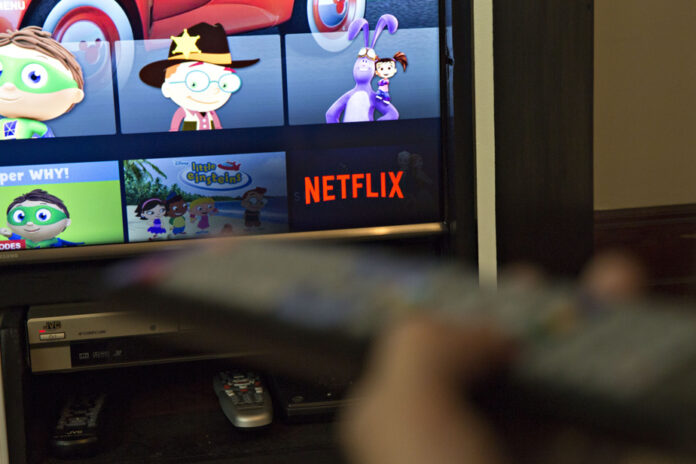Do you misunderstand the lines of a movie or your favorite TV series? You are far from alone, finds a Léger poll conducted for La Presse. And if it is sometimes possible to alleviate the problem, it is often a question of artistic or technological choices, even symptoms of hearing loss against which nothing can be done. Or so little.
Nearly one out of three Quebecers, 31% more precisely, watches television using subtitles. According to a Léger poll conducted for La Presse from August 25 to 28 with a sample of 1,000 people representative of the Quebec population, the main reason for using subtitles is quite logical: 28% of subtitle users do so because they have a poor command of the language in which the program is broadcast. This reason is mentioned by 37% of Francophones.
However, 18% of subtitle users answer “because I can’t hear well.” The same percentage say “audio quality is poor.” In the United States, a survey conducted in June 2022 by the firm Preply gave even more marked results; 50% of the 1,260 Americans surveyed said they use subtitles most of the time, and 72% of those blamed poor audio quality. Finally, 55% felt that it is now more difficult to understand dialogue than before.
In short, this grievance of viewers is widespread. Here are three causes.
Heavy CRT televisions certainly didn’t offer the best picture, but they had an asset that’s been missing for at least a decade: space. This made it possible to integrate larger speakers and, above all, placed at the front of the television.
Increasingly slimmer, with minimal bezels, recent LED TVs most often only allow speakers to be installed in one place: at the back. For example, a TV like Samsung’s newest QLED is 1 inch thick without a stand. A Sony Bravia XR? 5.3cm.
“There are too many technological compromises behind modern TV speakers, they don’t sound good,” said Francois Lacasse, professional sound mixer. TV manufacturers, I would be curious to know how much they invest in sound. We see it in department stores, they are there to sell images. »
It’s obvious that a speaker facing backwards, away from where the viewer is sitting, will not deliver ideal sound. The result will be even worse if the TV is stuck to a wall with a stand.
The simplest solution is to add a soundbar. This market has exploded since 2015, going from 12.1 to 42 million units sold worldwide, according to Statista. Models can be found in a wide variety of price ranges, especially between $100 and $1000. Another solution is the good old stereo hooked up to the TV. “The best thing is to have two good speakers and an amplifier,” Lacasse advises.
In Quebec, it is estimated that 31% of the adult population, or 2.1 million people, has hearing problems, and the phenomenon continues to grow, according to statistics from the organization Audition Québec. “It’s not so much that human hearing has declined, but people are losing hearing younger and younger, around 30 or 40 years old rather than around 50 or 60 years old,” explains Marie-Ève Léveillé, audiologist and spokesperson for the Quebec Association of Speech-Language Pathologists and Audiologists (AQOA). One of the main causes: the “plague” of listening to music at high volume with headphones “that people have all the time, even sometimes they sleep with them”.
One of the symptoms of this hearing loss that Ms. Léveillé observes in her practice is the fact that she no longer understands the dialogue on television. “It’s often one of the first complaints. We then no longer have access to visual clues, we do not necessarily see the lips or the face of the person who is speaking, ”she explains.
She advises to “give your ears a break”, set aside periods of silence or low volume sound. “If you exceed the maximum dose, the human ear gets tired. The louder the sound, the longer the pause should be. »
As a sound professional, president and founder of Studio Interlock Audio in Montreal, François Lacasse states from the outset that “there is nothing intentional” that the dialogues on television are sometimes difficult to understand. . But this is often the case, and the reasons are multiple, he recognizes.
The first explanation, well known to experts: craftsmen work for a long time on their production and eventually get used to the sound. “You end up knowing everything that is said. Even if the sound is a little weaker, we no longer ask the question, we understand. »
Dialogues that are difficult to understand can be an artistic choice, with mumbling actors or a director who wants to confuse the viewer. “Mumbling is what’s in. […] Christopher Nolan, in the industry, is known for burying his dialogues, he likes to leave a certain mystery. »
There is also quite a technical challenge in mixing the sound of a work that will be heard in a state-of-the-art movie theater as well as on a cell phone, via a television set – with or without auxiliary speakers – and a laptop. This is where streaming platforms like Netflix and Disney have changed the game.
“For most movies, we’re going to do a cinema mix and a TV mix. A platform like Netflix will only do one mix, they have got into the habit of mixing all the shows as if we all had home theaters, with a lot of dynamics. »
And the evolution of sound standards, where compression is increasingly used to reduce data rates, affects the quality of the result. “As soon as we talk about wireless, we talk about data compression. It can’t be better than wired. Information is compressed and decompressed, there is a cost. »















